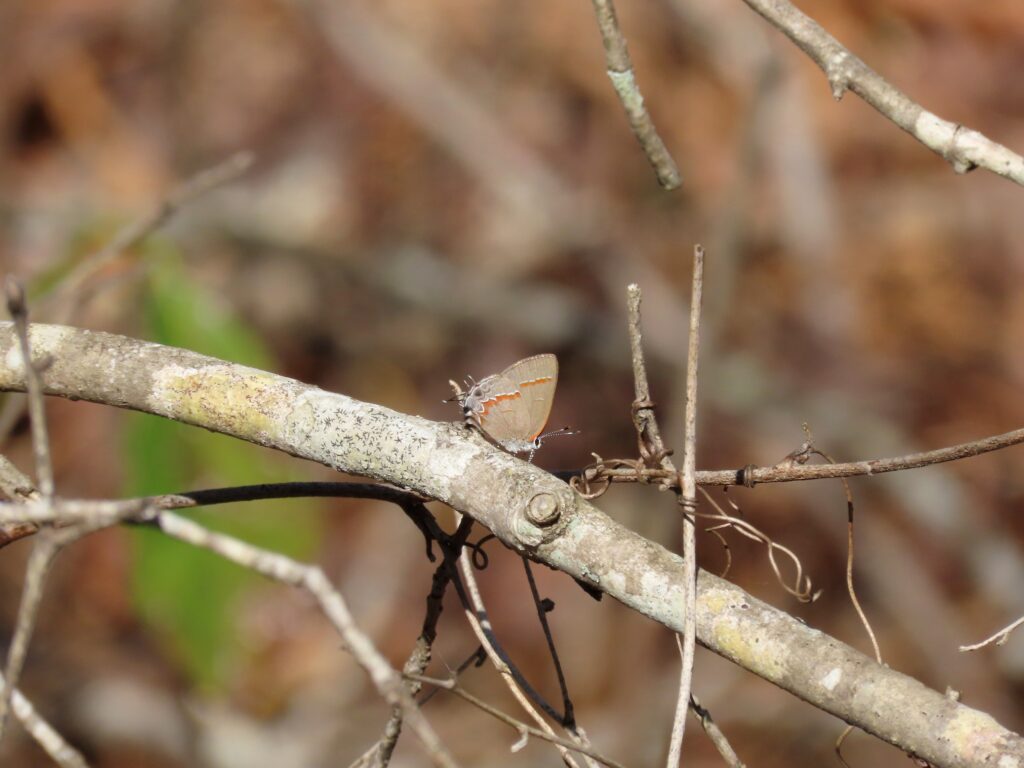

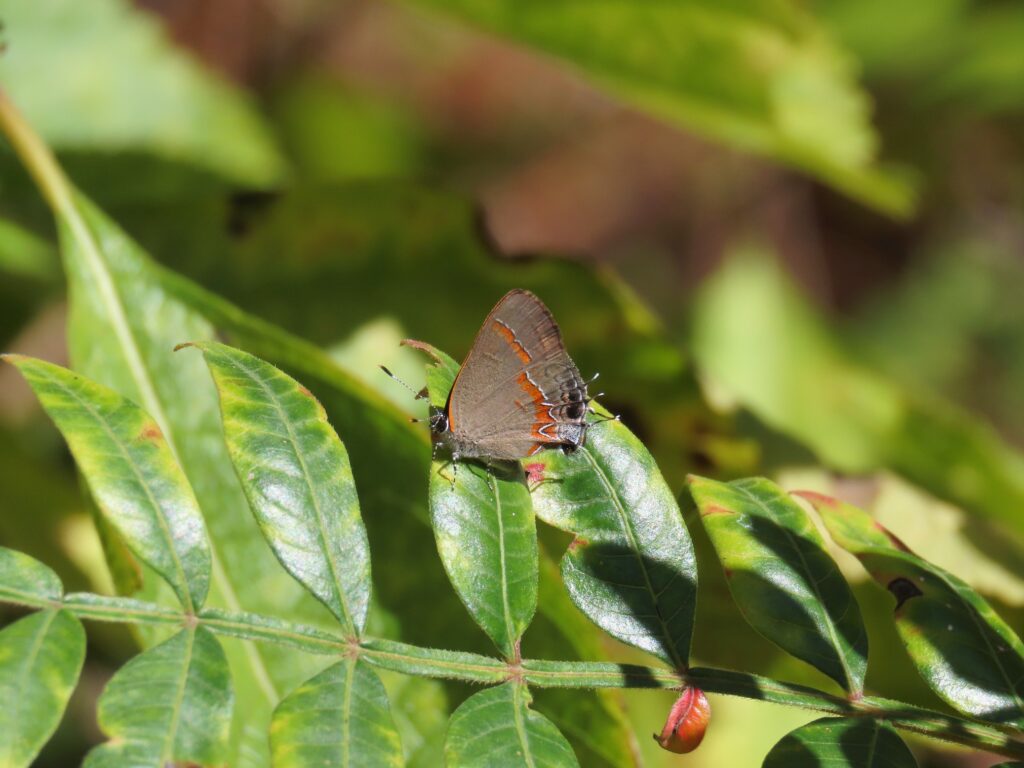
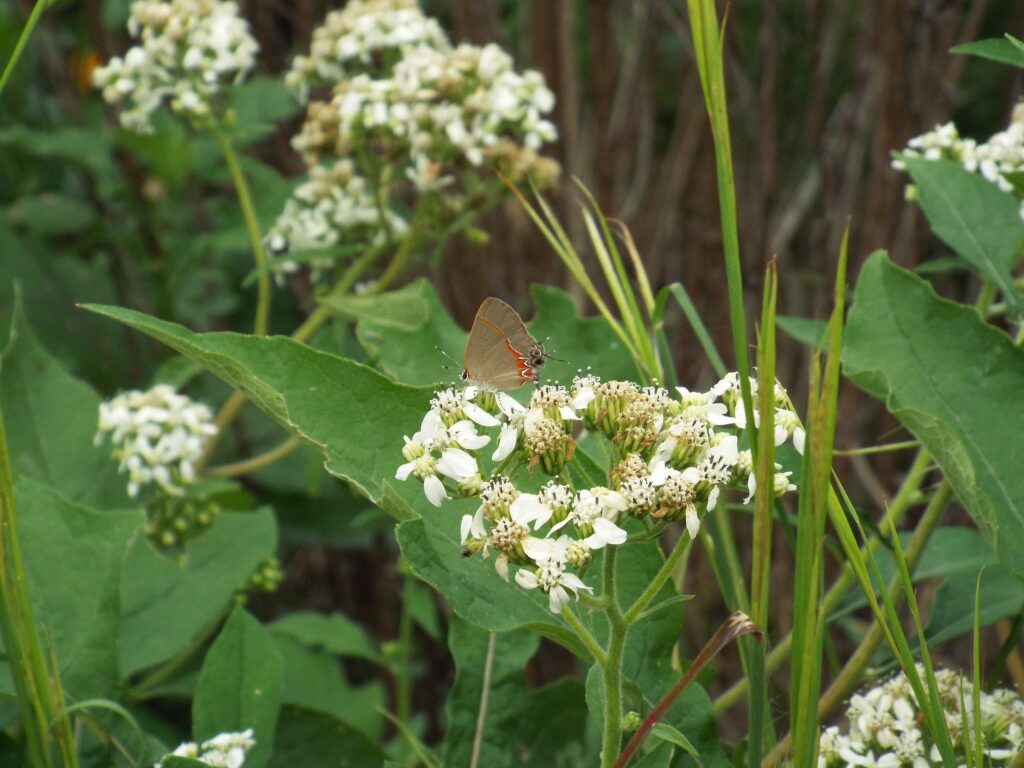

This week for Flora and Fauna Friday we’ve got a dirt common, detritivorous, diminutive butterfly, the Red-banded Hairstreak (Calycopis cecrops).
The Red-banded Hairstreak is found throughout the Southern United States and all of South Carolina. It’s one of our most widespread butterflies in the Carolinas and present in low but consistent numbers almost anywhere you go in the Lowcountry. They’re especially common along forest edges, pond banks, roadsides, powerline clearings, and other brushy areas. The Red-banded Hairstreak is a member of the Gossamer-winged Butterflies, family Lycaenidae, and more narrowly the Hairstreak subfamily, Theclinae. Our classic Hairstreaks all share a similar suite of characteristics that set them apart from other butterflies. Our Red-banded Hairstreak checks all of those boxes.
Red-banded Hairstreaks are small, about the size of a dime. They perch upright with their wings closed and have a triangular in profile. They are slate-gray and iridescent blue above and a warm-gray below with white, black, orange, and blue markings. Their namesake field mark is a heavy red-orange band down the middle of their wings. No other butterfly in the Carolinas boasts the same red band. This band has a sharp black and white margin. Paralleling it is an orange leading edge to their forewing. At the outside bottom of their hindwing is a special defensive pattern, a blue spot flanked on either side by black and orange semicircles and with a double set of “tails” protruding just above. This collection of features mimics their face, at least in the eyes of predatory insects, and draws attention to it. Many Hairstreaks employ this same defense and will slowly rub their hindwings together when perched to better emphasize it. The corner of their hindwings is actually weaker than the rest of their wings, allowing the wing to break off if attacked and the butterfly to fly away scarred but unfettered.
Red-banded Hairstreaks are quite unique as caterpillars too. They’re actually, in a way, detritivores. Rather than feeding on fresh foliage, they feed on the fallen leaves of several shrubs. Female butterflies lay their eggs in the leaf litter beneath these bushes and their young’uns happily munch away on freshly fallen leaves. It’s an ingenious strategy, as it means their larvae are safe from many patrolling insect predators and food is available essentially year-round. Red-banded Hairstreaks primarily host on Wax-Myrtles (Morella spp.) and Winged Sumac (Rhus copallinum). Both of these shrubs are extremely common in the Lowcountry. Thus so is the Red-banded Hairstreak and it can be spotted anytime from March through October. The adult butterflies are particularly fond of small white and yellow flowers for nectar nourishment, particularly Goldenrods, Bonesets, Pepperbush, and members of the Carrot family.
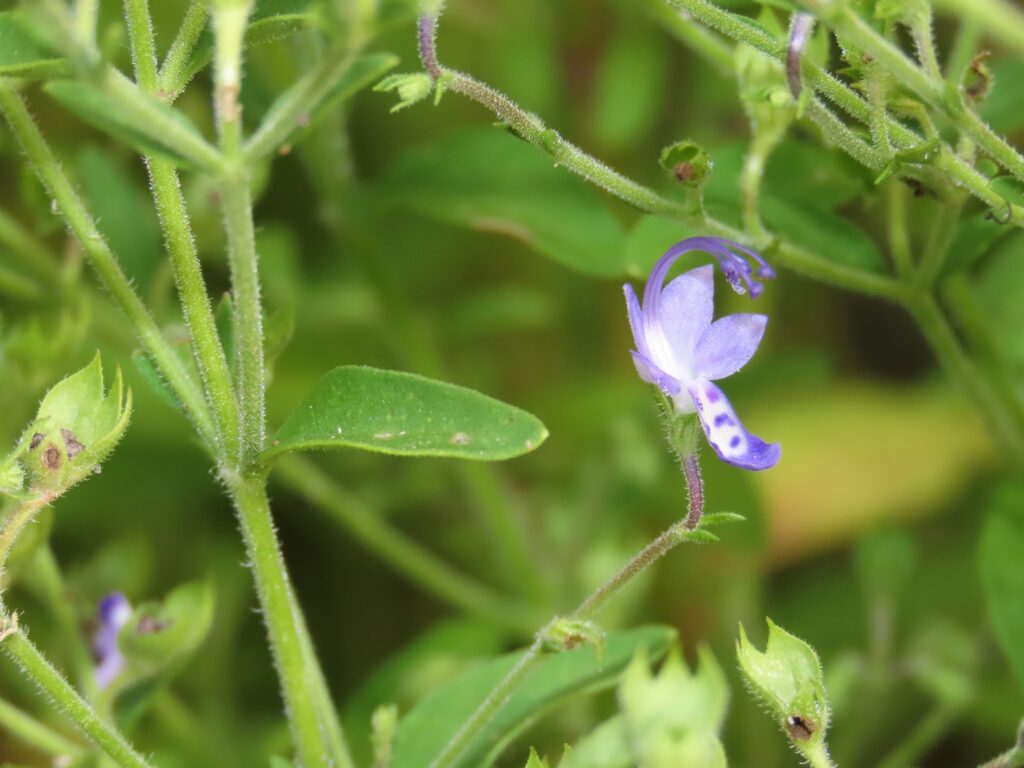
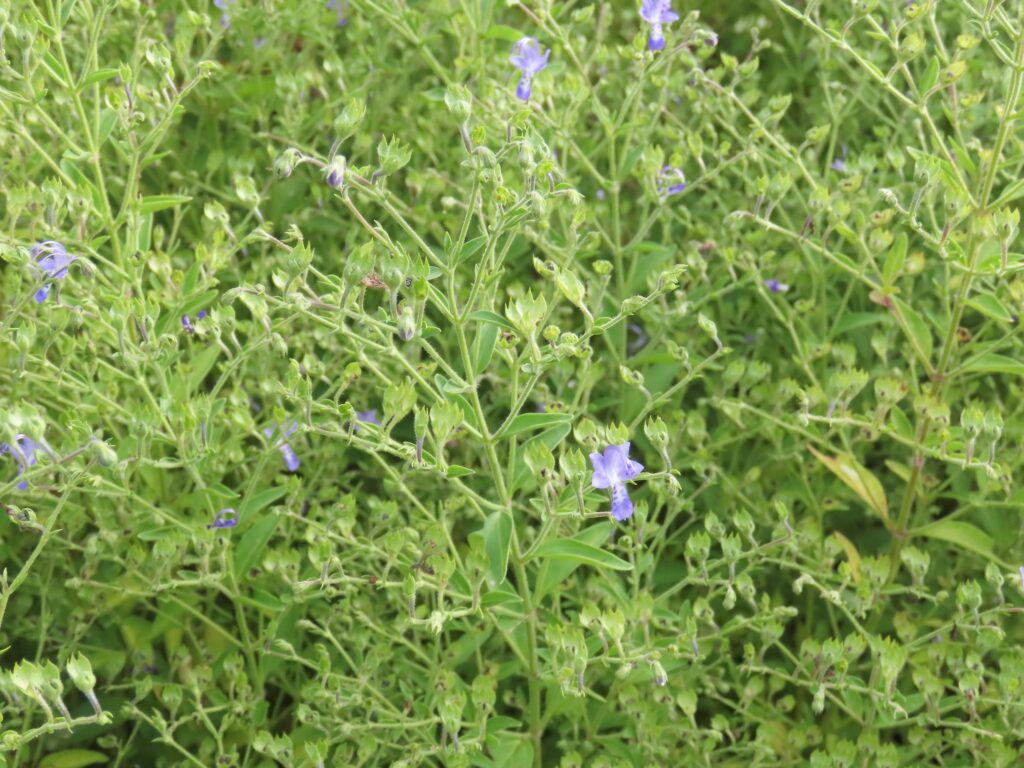
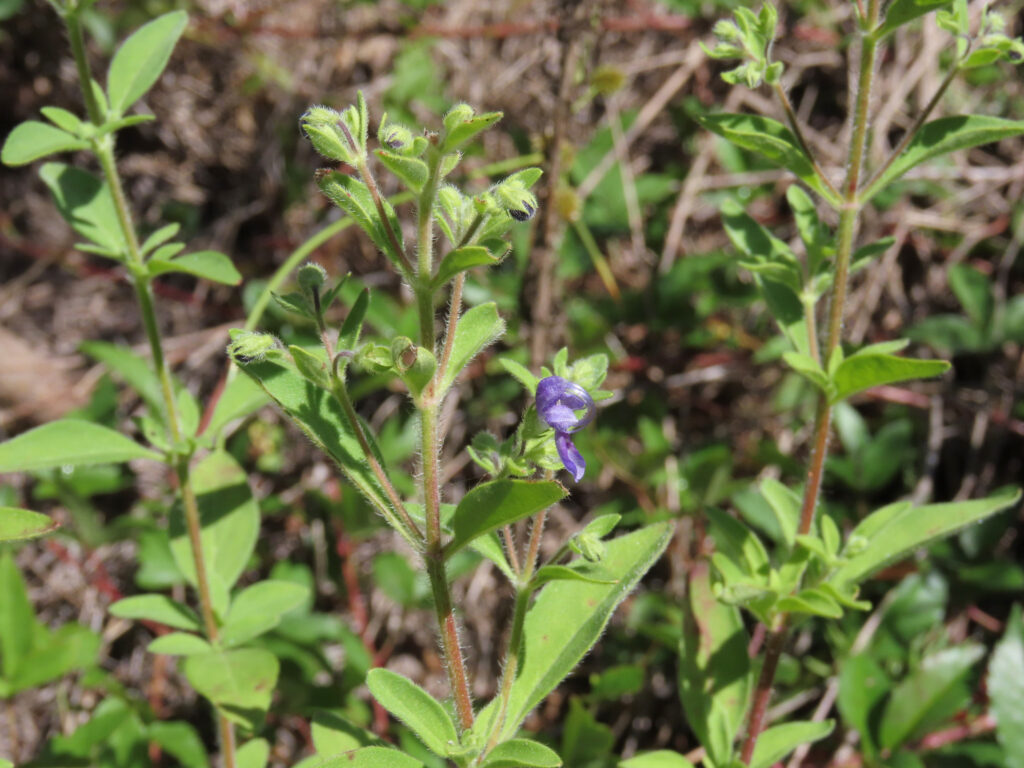
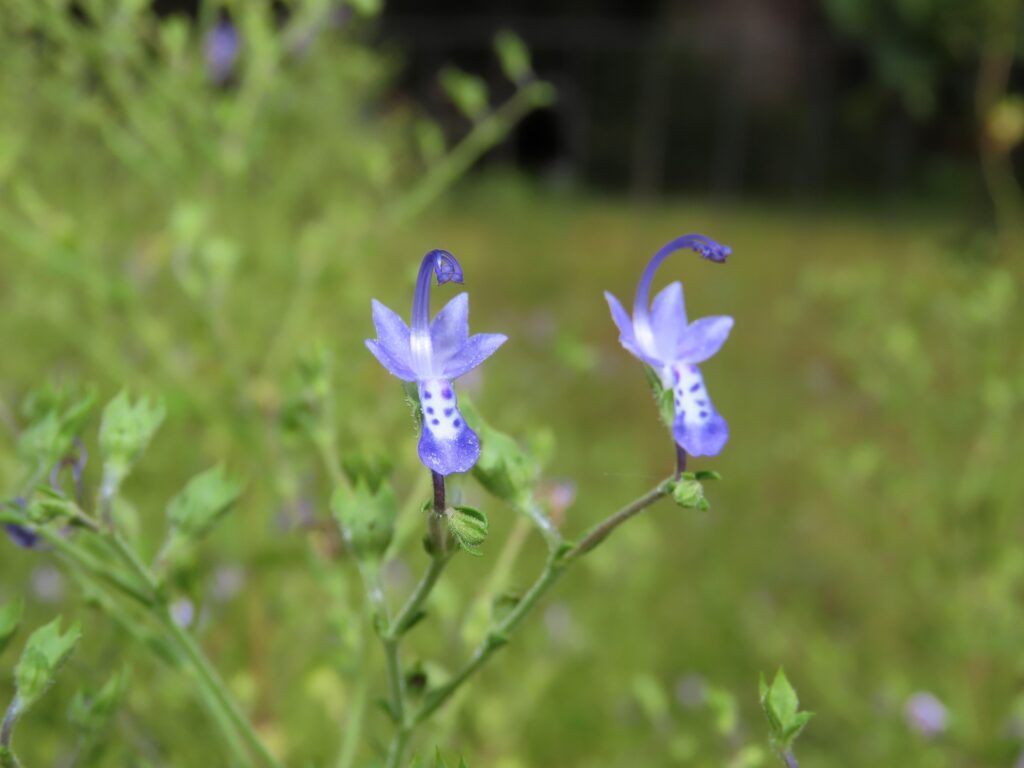
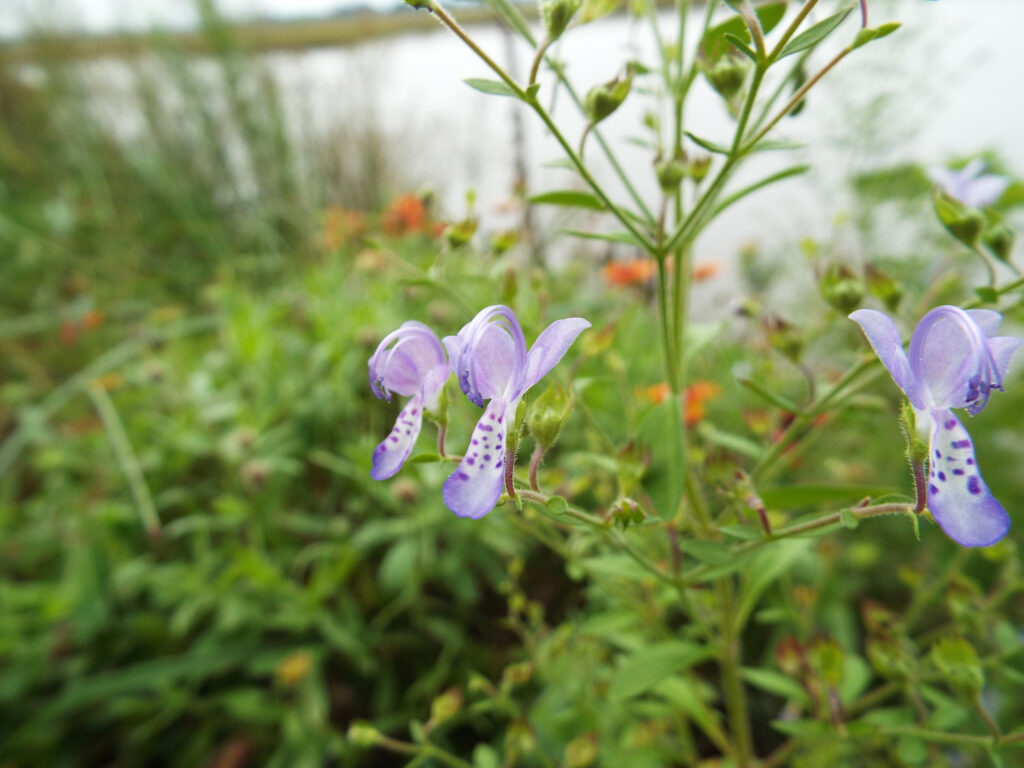
This week for Flora and Fauna Friday, we’ve got a shrubby symmetrical sun-loving sand ridge wildflower, Forked Bluecurls (Trichostema dichotomum).
Forked Bluecurls are found throughout the Atlantic Coastline of the United States and across all of South Carolina. It’s an annual plant, growing about knee to waist high, into a small upright bush. They grow best on dry, sandy soils and are common under pine savannas, on our Sea Island sand ridges, and along sunny upland roadsides. The stems of Forked Blucurls are covered in dense, fine hairs and often blush a burgundy-red when growing in full sun. Its leaves are light-green, small, simple, diamond-shaped, and oppositely arranged. That opposite arrangement gives the whole plant some visual symmetry and its “forked” first name. But it owes its surname to it flowers.
From the start of September through mid-October, Forked Bluecurls are in full bloom. The bush becomes emblazoned in a brilliant glow of purple-blue flowers. (“Blurple” being the technical term for this color.) Each flower is about a half-inch in size and held upright. The flowers have four short blue petals reaching left and right and a fifth long petal flowing forward and down with a blue tip and a white middle speckled by blue spots. Overtop the petals hangs a great curled arch of four anthers and one stigma. This flower is a carefully crafted apparatus for enforcing efficient pollination. When a bee approaches for a landing, that white patch on the lower petal beams in reflected ultraviolet light, like a runway beacon guiding its way. Once the bee touches down and leans in for nectar, those blue curls scrape against its back, depositing and extracting pollen. It’s a very effective system and, consequently, Forked Bluecurls are a prolific self-seeder. Despite being an annual, they’re a plant that can be relied upon, year after year, to return to any yard or native plant garden. Albeit, not always where originally intended!
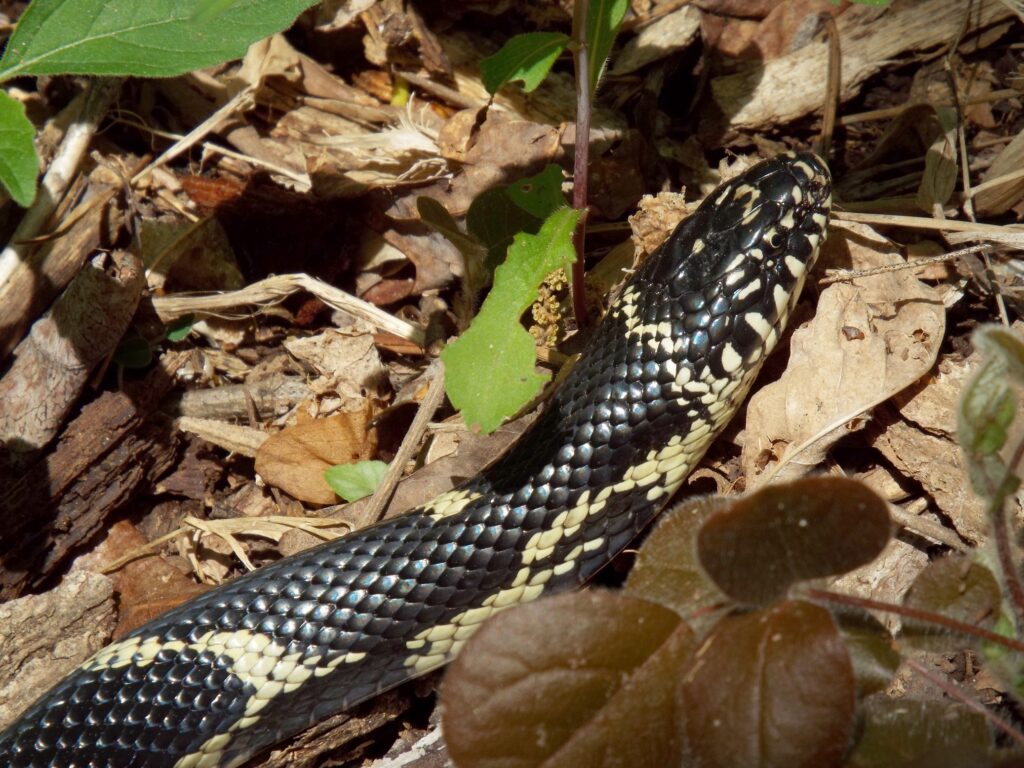
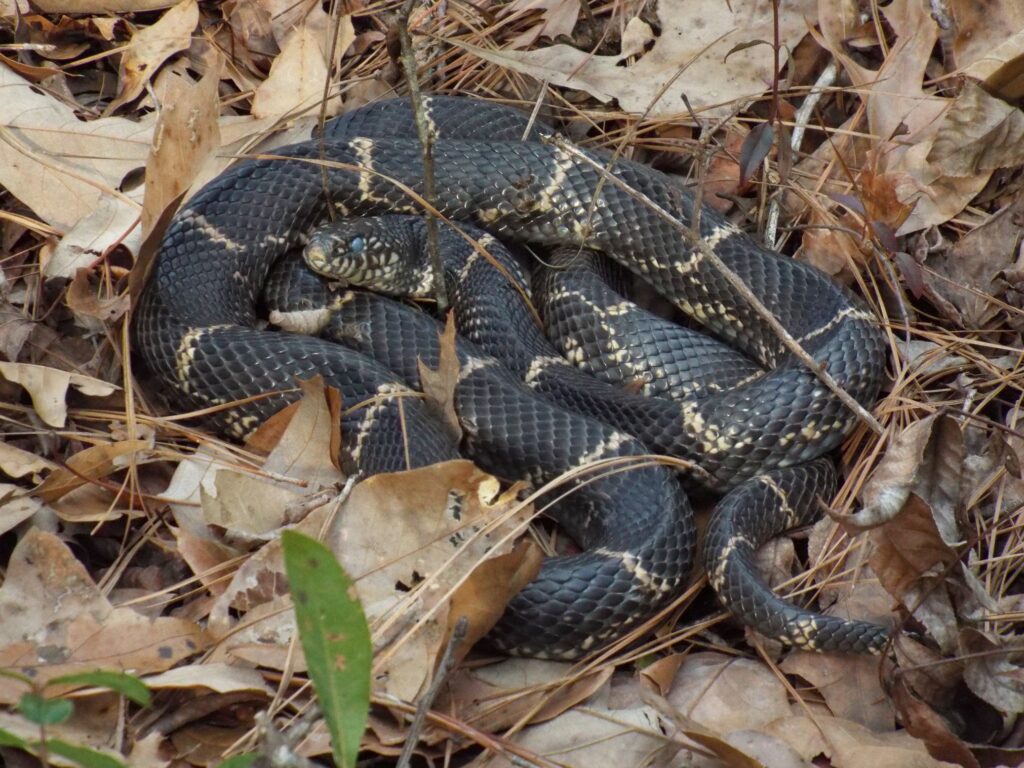
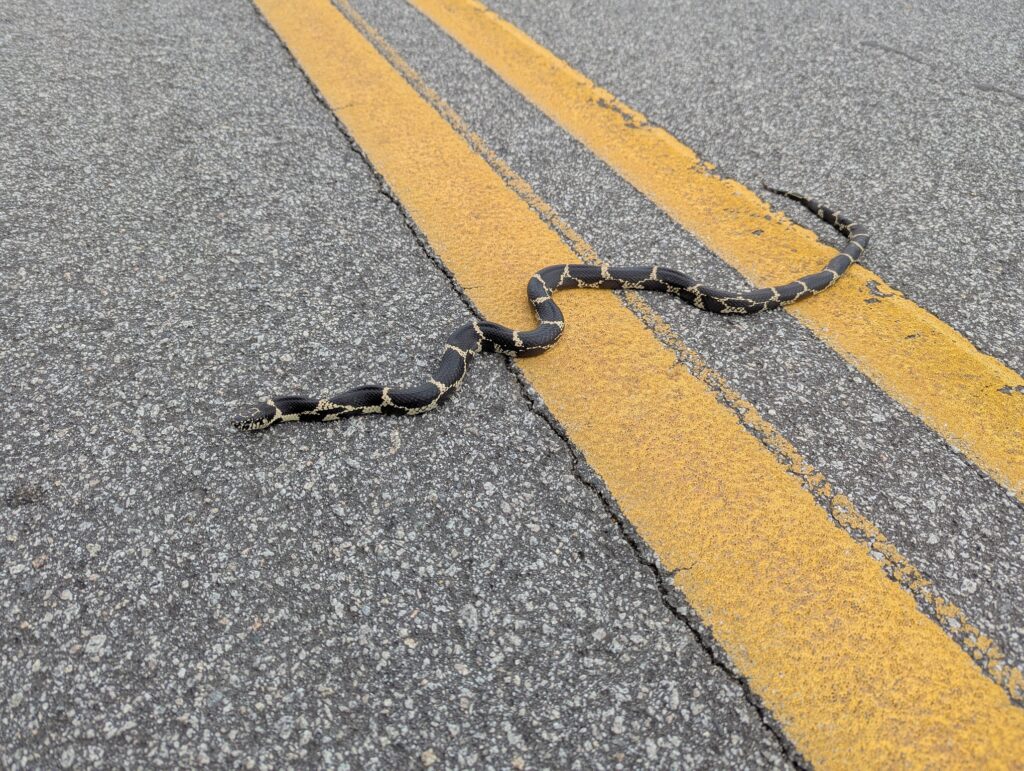
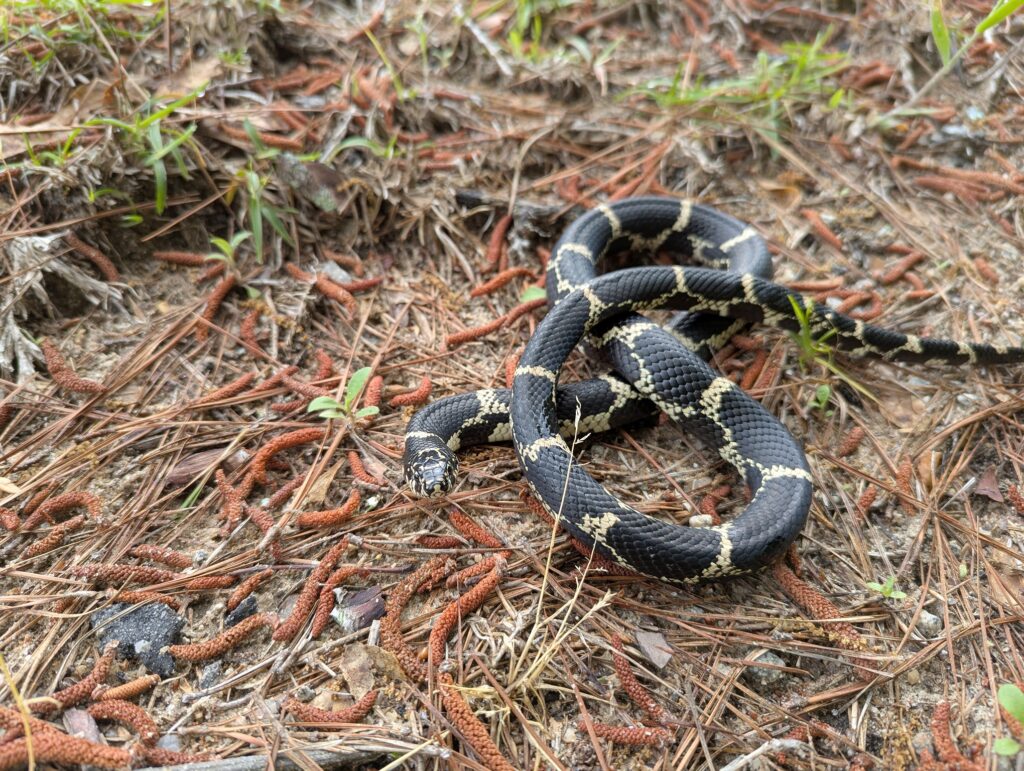
This week for Flora and Fauna Friday we have the reigning regent of our ropey reptiles, the Eastern Kingsnake (Lampropeltis getula).
The Eastern Kingsnake ranges through the Mid-Atlantic States, from New Jersey through Florida, and in all of South Carolina. They’re found in a wide array of habitats but are most abundant in lands surrounding swamps and other waterbodies, where food is abundant. Unlike most of our southeastern snakes, Kingsnakes are primarily diurnal, rousing at daybreak and hunting throughout much of the day.
Kingsnakes are marked with a bold, bicolored pattern of jet-black divided by thin crosswise bands of ivory-white. These white bands interconnect with each other along their flanks to weave a net-like, reticulated pattern extending down over their belly. Their head is crowned with a smattering of white dots and dashes. Each snake has a unique head pattern, which can identify them like a name. They’re a striking, unmistakable, and handsome snake to behold. Kingsnakes are big and heavy to boot. They most often grow to three to four feet long but can exceed six feet in the wild. They’re strong constrictors and thus have a heavy, stout frame that hints at their muscled physique and big appetite.
Kingsnakes hunt a wide array of animals for food. Their diet is composed of mainly frogs, lizards, rodents, eggs, and snakes. Kingsnakes are renowned for their tolerance to viper venom, being essentially immune to the bites of Copperheads, Cottonmouths, and even Rattlesnakes. Kingsnakes lack any form of venom. Kingsnakes are harmless to humans, but not to their prey. Instead of toxic teeth they use their well-toned torso to constrict, strangle, and crush their prey before swallowing it whole. That includes venomous snakes nearly their same length! Vipers, despite being heavy and impressively large, are all bite and no might; they’re a glass cannon. Venom is their one and only defense and, if it fails, a viper is out of options. This is weakness of vipers is an ecological niche the Eastern Kingsnake has adapted to capitalize on, and the matchup couldn’t be worse for the viper. Like a black belt in jiu jitsu thrown into a bar fight, it takes a Kingsnake mere seconds to fold its opponent into an inescapable and incomprehensibly painful pretzel-like shape. Kingsnakes adhere to the age old adage of ‘might makes right’ and have been coronated the “King Snake” by early naturalists due to their uncontested position in the serpent pecking order.
But their reign is waning and their kingdom in tatters. Eastern Kingsnake populations have declined dramatically range-wide over the last few decades. The reasons behind this decline, despite coordinated research by multiple states, are worryingly unknown. The declines are even occuring in some of the most extensive and sheltered swaths of habitat on the landscape, implying the causes are subtle, diffuse, and inescapably chronic. Ubiquitous factors in the southeastern landscape like habitat loss, degradation, and fragmentation, climatic instability, invasive species, pollution, and exotic diseases are assumed to all be playing a part in some way to the withering of Eastern Kingsnake populations. Kingsnakes, being a snake eater, are also particularly poised to be overexposed and sensitive to environmental conditions that impact snake populations. Kingsnakes are more intensively exposed to snake diseases and bio-accumulating pollutants, given they subsist on a diet of snakes. Their prey may be suffering with these ailments and pass those on to the hunter. You are what you eat after all. In parallel, if other snake populations decline, that means less food for the Kingsnakes and their populations must contract accordingly to remain stable. It’s a double whammy. However, this is all speculative conjecture on my part. The takeaway is that Eastern Kingsnakes are in a rough spot and they need our attention and care to ensure their continued prosperity and governance over the snakes of South Carolina.



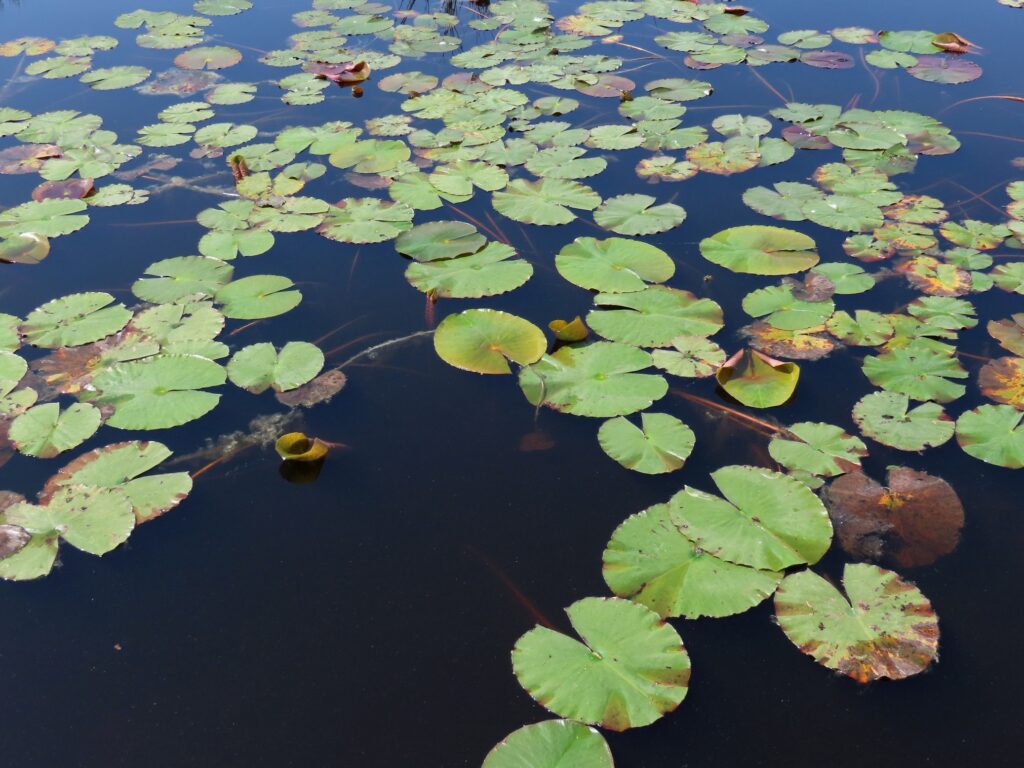
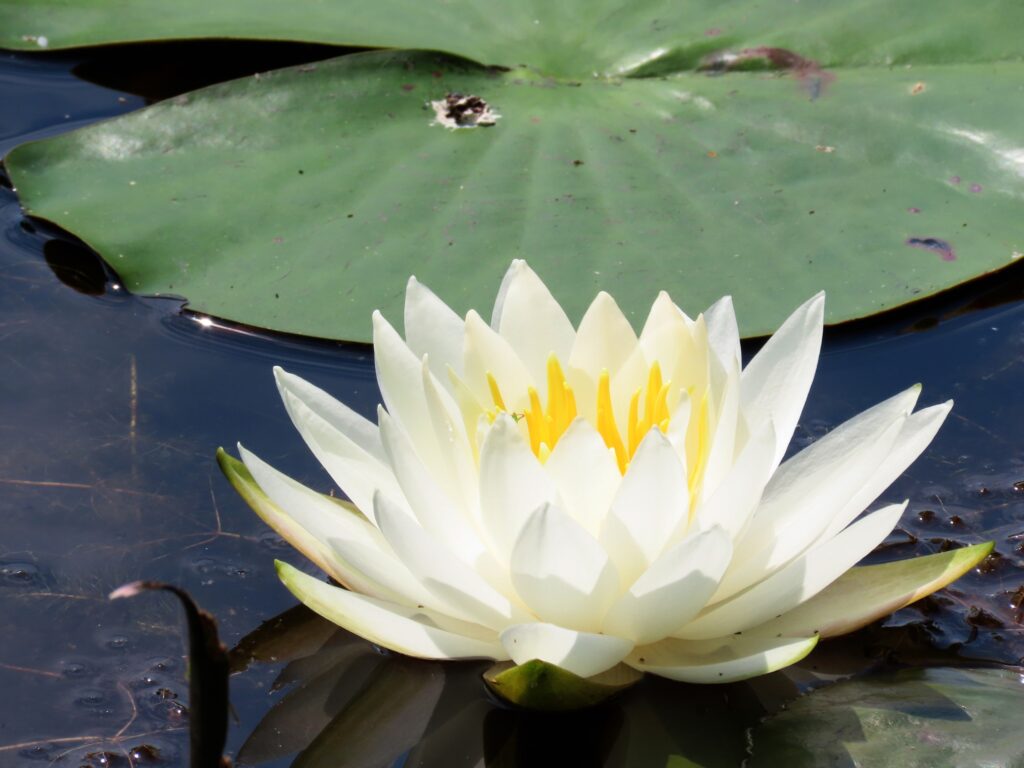
This week for Flora and Fauna Friday it’s the buoyant beacon of bottomland and pond, the American White Waterlily (Nymphaea odorata).
The American White Waterlily is found scattered about the Eastern United States and most of the South Carolina coastal plain. It’s a denizen of slow flowing freshwater pools, ponds, lakes, oxbows, beaver dams, and bottomlands where the water is clear, shallow yet deep, and not overly nutrient rich. It does best in the warm waters of the South where ponds aren’t too deep and never freeze solid. Waterlily is a submerged aquatic plant. It establishes in the mucky substrate of a pond bottom and propagates throughout it as scaly rhizome. This rhizome anchors roots down below to extract nutrients from the murky depths and sends stems up above to reach the sunlit surface. These ropey stems extend through several feet of water until they breach the surface with a single leaf.
Waterlily leaves unfurl into the classic “lily pads” we all know and love: dish-shaped with a shallow rim, a wedge missing from the back, and floating tight atop the surface of the water. These leaves have a hydrophobic coating that repels water, keeping them dry and atop the water, rather than trapped below. The leaves and stems are largely hollow and full of air, allowing them to float to the surface no matter how deep it gets. These hollow stems also act like snorkels that flow oxygen enriched air down to the spongey roots. The bottom of a pond is often devoid of all oxygen and so oxygen must be pump down to sustain their roots. The flower of American White Waterlily is an unmistakable sight shining in the swamp, a large and brilliant pearl-white whirl of petals cupped around a golden heart of anthers, floating atop or hovering just above the water amidst a glistening flotilla of green lily pads; a porcelain hand from the Lady of the Lake offering a gilded treasure from the murky mire.
This elongated growth form of the American White Waterlily allows the plant to get the best of both worlds. It can reap the full intensity of the sun’s rays and mine the nutrient rich mud at the bottom of the pond, all while having a steady flow of oxygen to its roots and an infinite supply of water. This stringy shape allows it to grow where few other plants can manage. As such, its root system can get quite extensive and Waterlily can quickly fill up a pond. Waterlily does best in ponds with low dissolved nutrient levels and consistent but light winter freezes, where its unique growth form is most advantageous and it doesn’t face excessive competition from duckweeds.
Waterlily provides food and habitat for a whole host of wildlife. Dragonflies enjoy perching upon the floating leaves. Frogs nestle between and upon the lily pads while fish lurk in their shade below. Beavers and Muskrats feed on the leaves and rhizomes of the plant. Ducks feed on its floating seeds and, by extension, help spread American White Waterlily seeds between ponds and swamps to start new populations.
The land trust accreditation program recognizes land conservation organizations that meet national quality standards for protecting important natural places and working lands forever. The Edisto Island Open Land Trust (EIOLT) is pleased to announce it is applying for our third renewal of accreditation in 2025. A public comment period is now open.
The Land Trust Accreditation Commission, an independent program of the Land Trust Alliance, conducts an extensive review of each applicant’s policies and programs. EIOLT is proud to have achieved our first accreditation in 2009, and we have continued to renew this level of organizational review and oversight ever since.
The Commission invites public input and accepts signed, written comments on pending applications. Comments must relate to how EIOLT complies with national quality standards. These standards address the ethical and technical operation of a land trust.
For the full list of standards see:
http://www.landtrustaccreditation.org/help-and-resources/indicator-practices
To learn more about the accreditation program and to submit a comment, visit:
www.landtrustaccreditation.org
Email your comment to: info@landtrustaccreditation.org
Comments may also be mailed to:
Land Trust Accreditation Commission
Attn: Public Comments
36 Phila Street
Suite 2
Saratoga Springs, NY 12866
Comments on EIOLT’s application will be most useful by October 1st, 2025.
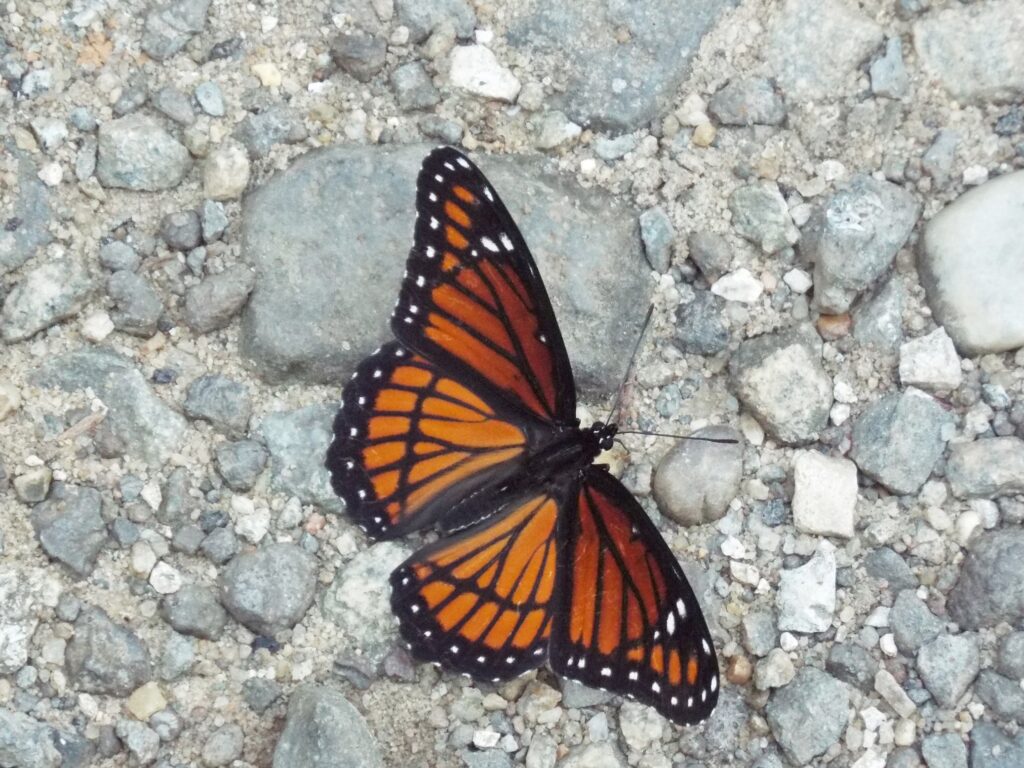
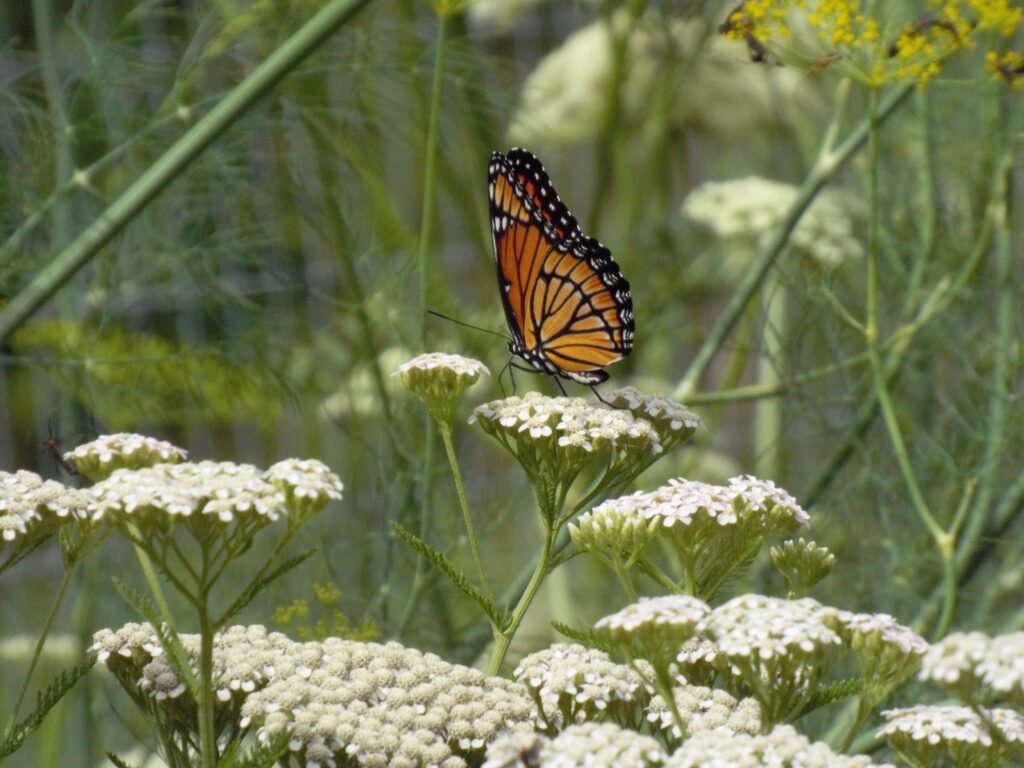
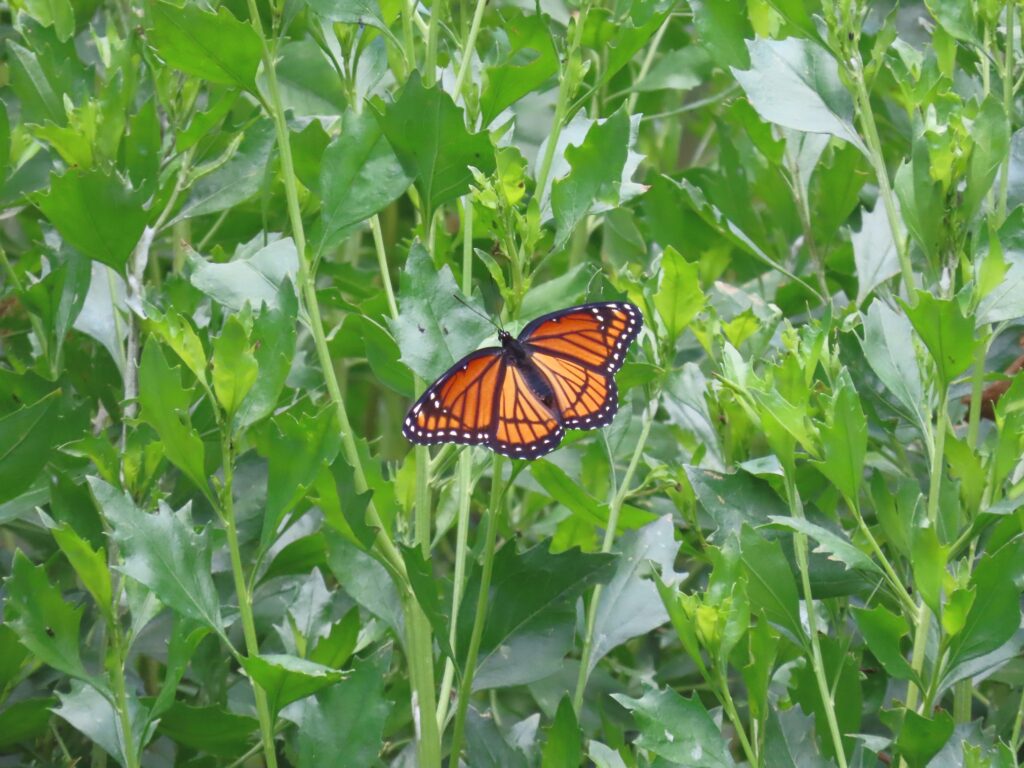
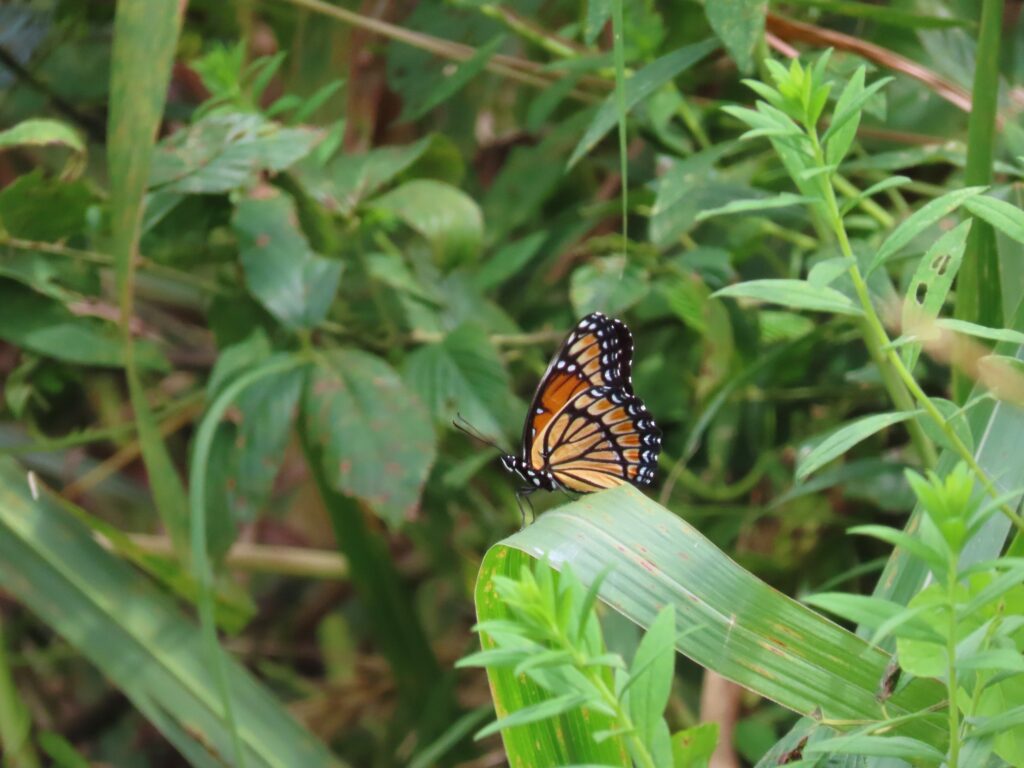
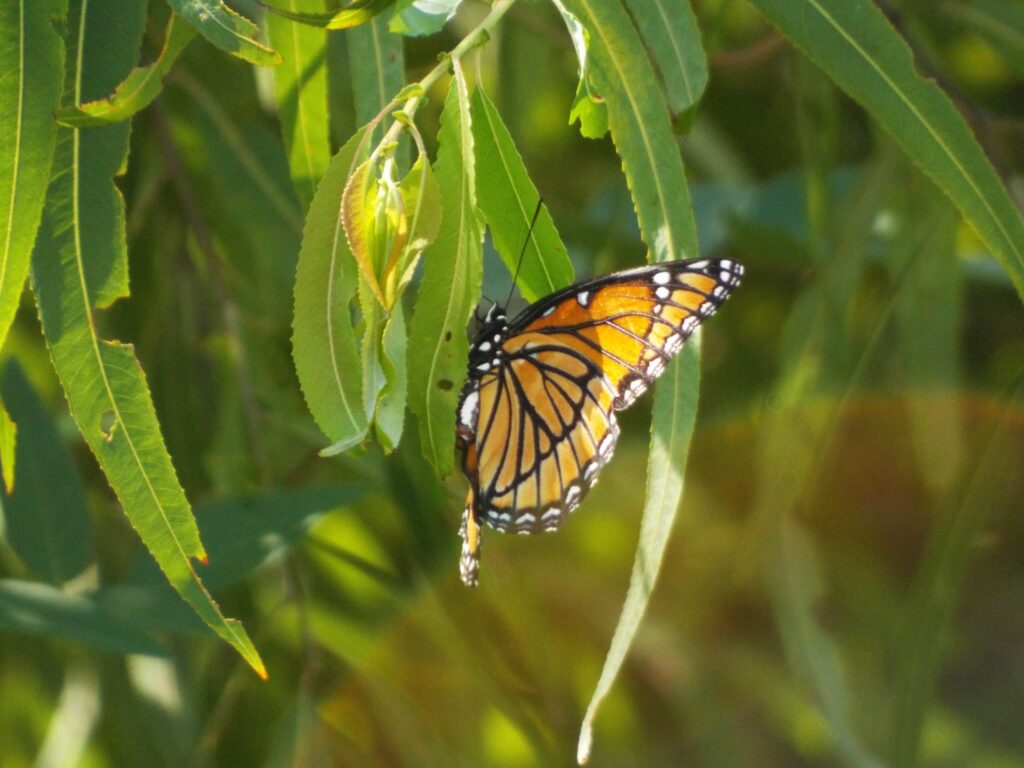
This week for Flora and Fauna Friday, it’s your local celebrity impersonator and the body-double of a beloved butterfly, the Viceroy (Limenitis archippus).
The Viceroy is a large butterfly found throughout the Eastern United States. The Viceroy’s wings are a burnt-orange crisscrossed with black veins, bordered with a heavy strip of black pinpricked by white, and with white spots at the wrist on the forewing. It’s a color pattern that is practically identical to that of the Monarch (Danaus plexippus). The only major visual differences between the two species are an extra black vein dividing the hindwing of the Viceroy, and the Monarch being a good third larger on average. Behaviorally, the two have a few telltale deviations. Monarchs rock and float more on the wing, whereas Viceroys often flutter in a straight line. Viceroys tend to stand atop vegetation while Monarchs dangle from it. But, at a glance when perched on a flower or gliding on the wing, the two look essentially indistinguishable. That’s by design. This is called Müllerian Mimicry. Both the Monarch and the Viceroy are toxic and foul-tasting to their predators. Thus they both benefit from bearing the same coat of arms and flashing the same warning signal to the world.
Unlike the Monarch, the Viceroy doesn’t migrate. They stay local to preferred habitats, generally wetlands, freshwater marshes, and river banks where Willows are plentiful. This makes their common name of “Viceroy”, a local ruler appointed by a wider ruling monarch, quite the apt name.
Viceroys, just like Monarchs, garner their toxicity as caterpillars by dining on their host plant. Here in the Lowcountry, Viceroys predominantly host on Willow trees (Salix spp.), eating their leaves and concentrating salycilic acid in their bodies. This is the same phytochemical that was studied and refined to create the medicine Aspirin. Viceroy caterpillars have a second defense mechanism as well and another form of mimicry. Their caterpillars have a lumpy greenish-brown body with a white saddle and two rugged black antennae. Their chrysalis has the same pattern as well, minus the antennae. Not only is this a fairly cryptic pattern that makes for good camouflage, but it also strongly resemble bird droppings. It might not be the most stylish appearance, but it certainly makes them an unappetizing target for avian predators.
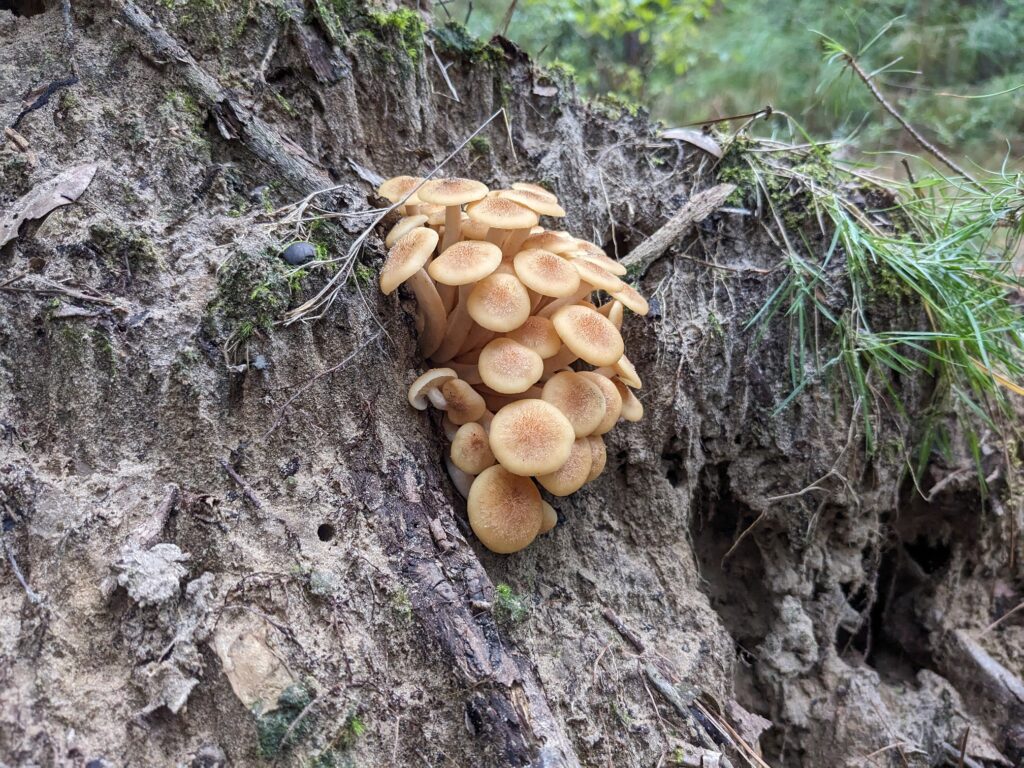
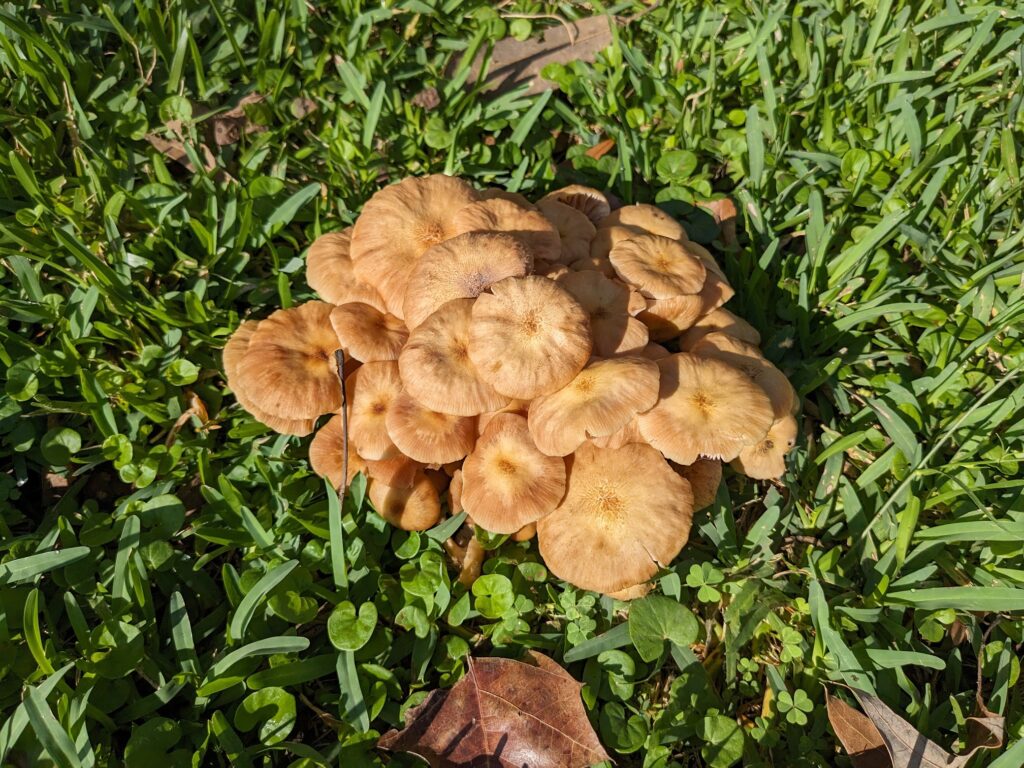
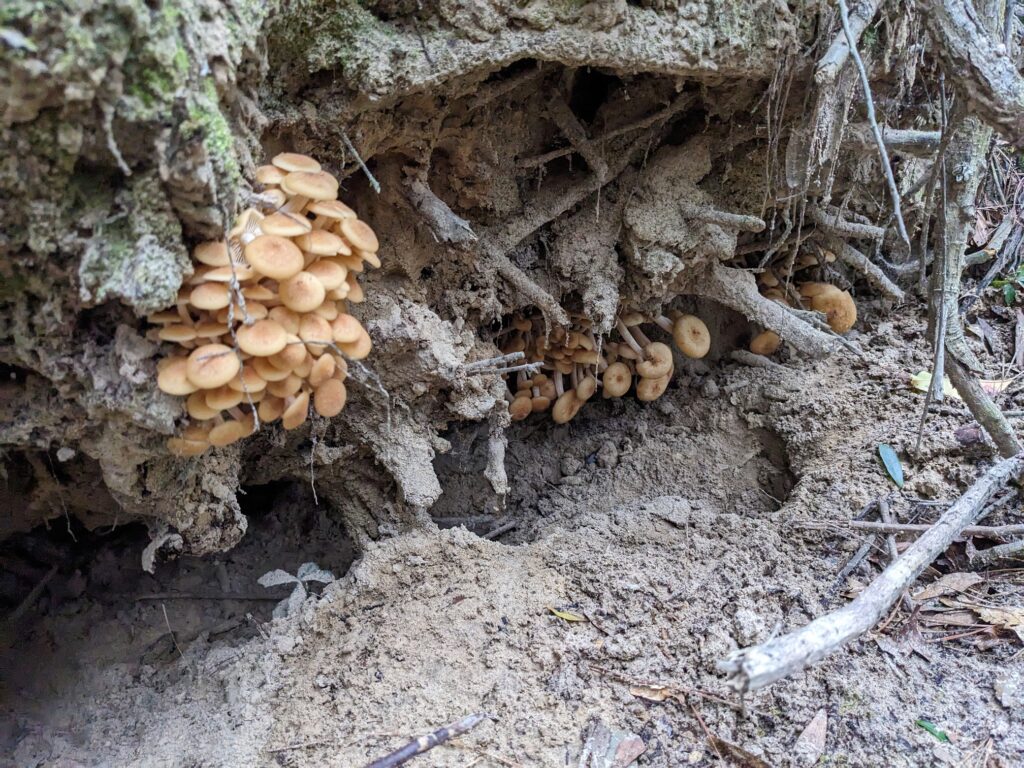
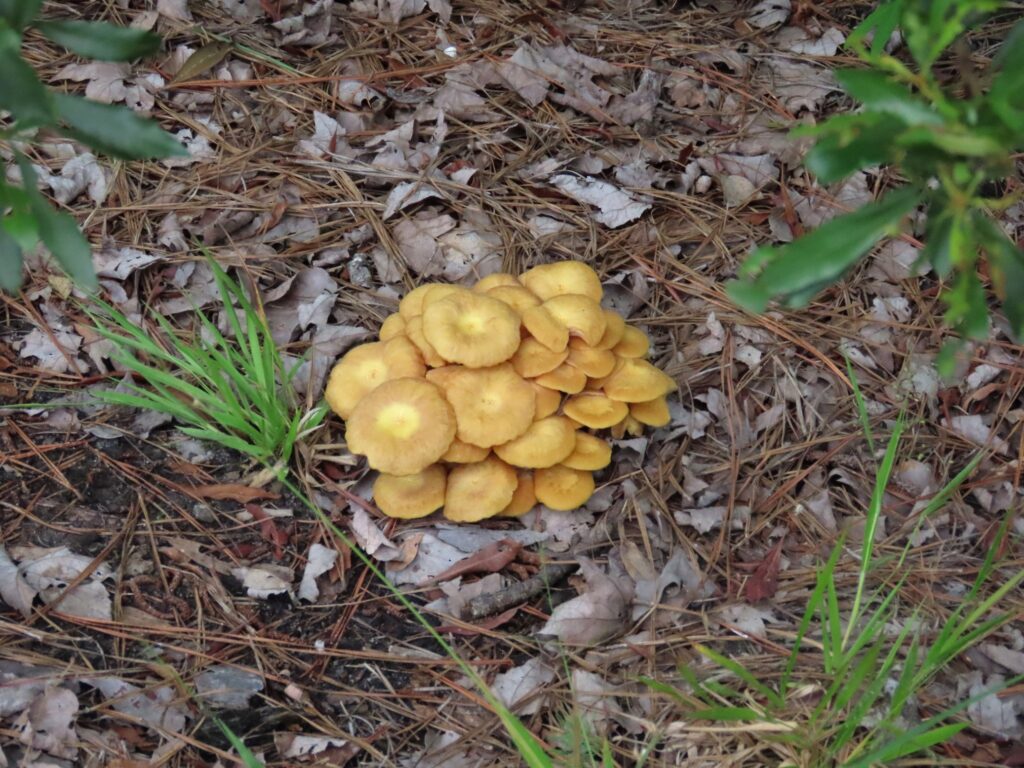
This week for Flora and Fauna Friday it’s the incredible, edible, glow-in-the-dark, root rotting, Ringless Honey Mushroom (Desarmillaria caespitosa).
Every year, in sync with the hurricane lilies, Ringless Honey Mushrooms begin to appear from the Earth on our Sea Island landscape. From the start of September through the end of October, they are readily found cropping up from hardwood stumps, upset root plates, and exposed roots in forests across the Southeast. Ringless Honey Mushrooms are saprophytic fungi and plant pathogens. They make their living off of trees and rotting wood. Ringless Honey Mushrooms infect the roots of a wide array of trees, most often hardwoods and commonly oaks. There they penetrate the heartwood and rot the roots and trunk from the inside out. An infection from any of the Honey Mushrooms is known to arborists and horticulturalists as “Armillaria Root Rot”, which is almost always fatal to the tree by the time it’s detected. Although it can be destructive to ornamental trees, Ringless Honey Mushroom is a natural player in our ecosystem and an important part of the nutrient cycling process. They generally only infect weakened trees and thinning out the forest canopy from time to time promotes understory biodiversity and a habitat mosaic. Saprophytic fungi decompose stumps and fallen logs, returning those nutrients back to the soil for the surviving trees to use.
The Ringless Honey Mushroom is somewhat easy to ID for a southeastern mushroom. It’s also edible and tastes quite good in my personal opinion. However, it must be fully cooked to avoid causing indigestion for some people. It emerges directly from rotting wood or the soil below a tree. From a single point, dozens of mushrooms crane upward ankle-high into a globe composed of two-inch flat caps, gilled beneath and set on pencil thin stalks. The mushroom caps are a drab-tan or pale-brown in color and the stalks bone-white. Notably, the stalks lack any form of a ring just below the cap, hence the moniker “Ringless” Honey Mushroom. This separates them from the Honey Mushroom (Armillaria mellea), which has a ring and a honey-colored cap, and also distinguishes today’s subject ‘shroom from all its poisonous or foul tasting lookalikes, of which there are a handful.
Speaking of lookalikes, this species was historically known by the scientific name Armillaria tabescens. However, deeper taxonomic and genetic work revealed that the “ringless” Armillaria were in their own genus, Desarmillaria, and that the Eastern United States harbors a visually indistinct sister species to Europe’s Desarmillaria tabescens. Thus, our American Ringless Honey Mushroom (Desarmillaria caespitosa) was rechristened.
A notable fun fact, the mycelia, the fungal equivalent of roots, of Ringless Honey Mushroom bioluminesce a faint blue-green light. Many of the other Honey Mushrooms and some other lineages of fungi do the same. It’s a phenomenon known as foxfire and it’s not understood why certain fungi produce this light. It may attract spore spreading insects, or function as some form of deterrent, or both, or neither. In the case of Ringless Honey Mushroom, only its mycelia glow, which are buried underground inside of tree roots where the light can’t escape. Maybe they radiate this light to ward off subterranean predators or pathogens. We genuinely don’t know. It’s a mystery.
Lastly my standard disclaimer when discussing a fungus, never ever eat a mushroom you found unless you’re 100% confident you know what it is. If you wouldn’t stake your life on your identification, don’t eat it, because you may very well be doing just that. A pack of mushrooms at the grocery store, even them fancy ones they’ve got at your favorite health food store, are a lot cheaper than a visit to the ER and/or a liver transplant. If you aren’t dead sure, don’t eat it. Another further point of caution, saprophytic mushrooms (like Ringless Honey Mushroom) can repurpose toxins found in the wood of their host trees. So if you don’t know what a mushroom is growing on, you may want to rethink your entrée for the evening.
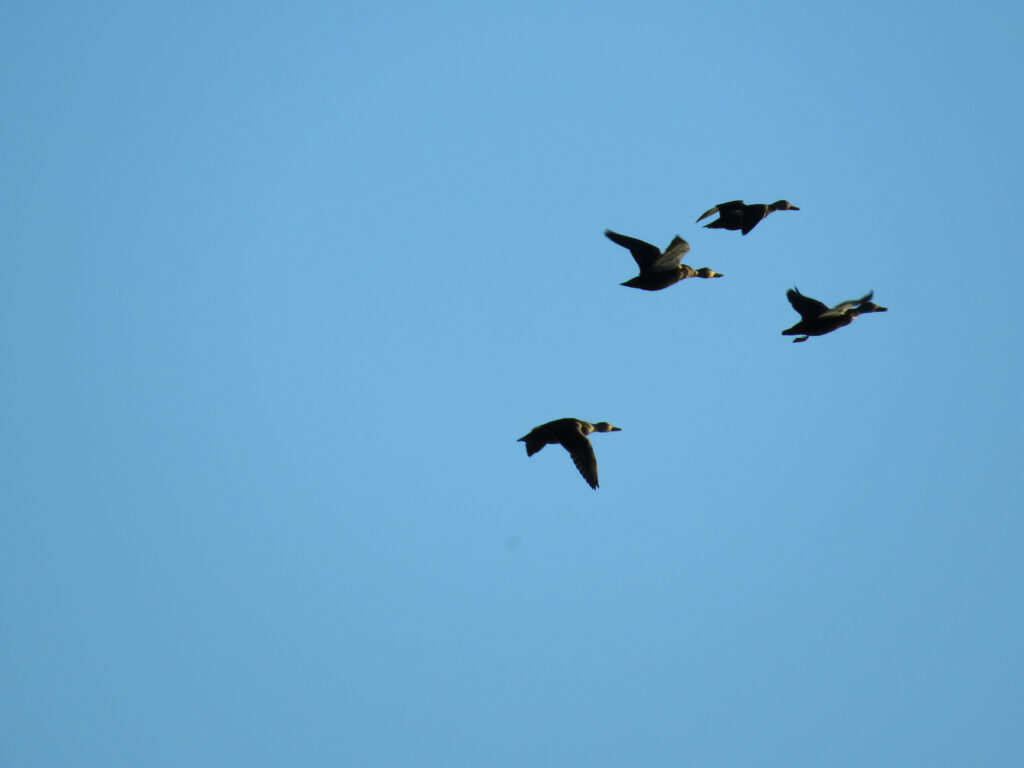
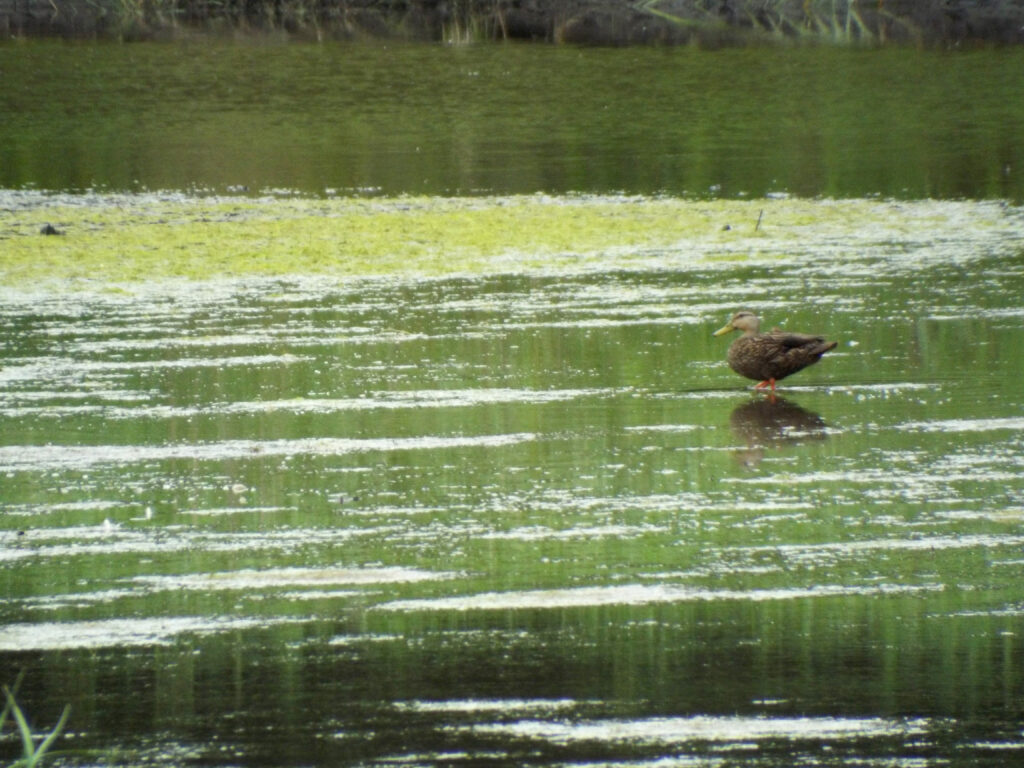

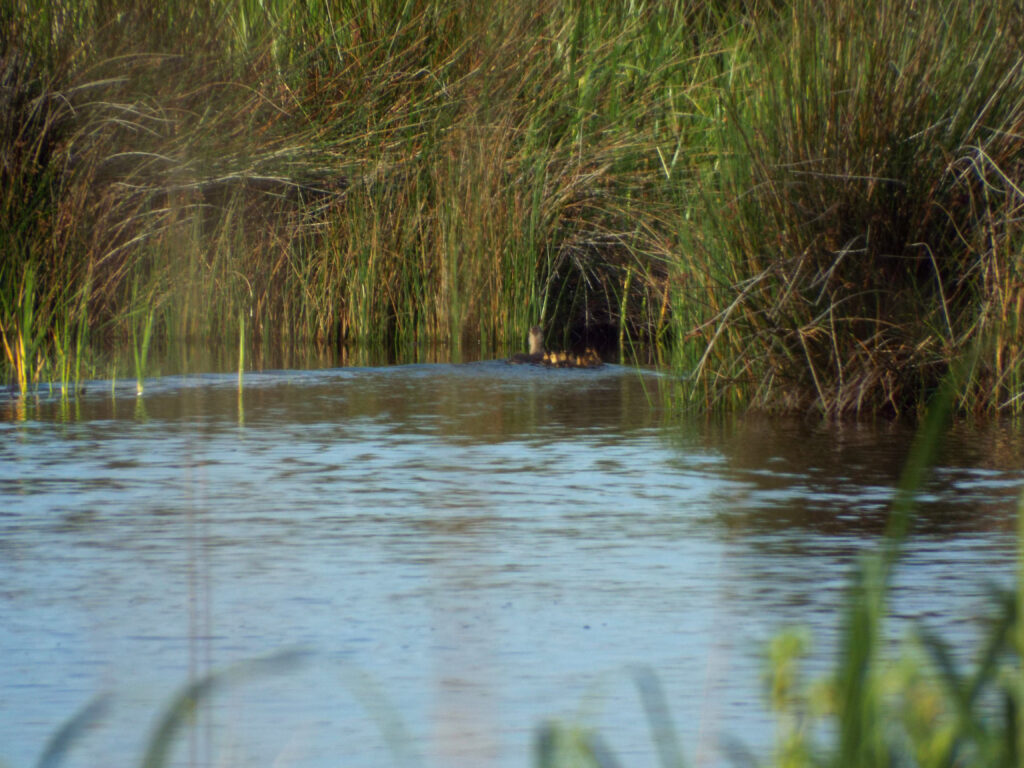
This week for Flora and Fauna Friday it’s a big duck from the Southeast with some baggage to unpack, the Mottled Duck (Anas fulvigula).
Feathers floating on winter waters, far-flung waterfowl can be found wary on our frigid wetlands every season. Amongst their numerous and cherished forms one dabbling duck looms above the rest, its newfound presence relegated to the margins of the marsh. The Mottled Duck is a large dabbler with a cryptic plumage. Their body is covered from tail tip to shoulders in a sea of two-tone feathers, ebony-black within and chestnut-brown around. At the throat the feathers lighten to a rich and textured khaki as they rise to a black, beaded eye. That eye is set at the summit of a darker arching stripe below a canopy of the duck’s darkened crown. The sole accent to break up this brindling of browns is a bill painted golden-yellow, save for a black tipped nail. On land, orange legs glow from below. In flight, iridescent indigo speculums shimmer atop the wings’ secondary feathers and below silver plates the wings’ entirety. Males and females look practically identical, save for the female’s yellow-orange bill. Amongst our Lowcountry ducks, the Mottled Duck stands out. Not just for its commitment to camouflage but because it’s just plain bigger.
The Mottled Duck is one of the Lowcountry’s only year-round duck residents, alongside the Wood Duck, a few Hooded Mergansers, and the nomadic Black-bellied Whistling-Duck. Mottled ducks can be found throughout southern Florida, and the tidal regions of the Gulf Coast, Georgia, and South Carolina. They are specialists adapted to our expansive brackish and freshwater marshes. They’ve also taken quite a liking to rice fields and shallow saltwater impoundments. They’re most easily spotted gliding along the fringes of open water in a brackish marsh, drifting out of view once they make eye contact with you. Mottled Ducks are powerful fliers, exploding up from the water when startled. As a true dabbler, they quack. A deep, loud, and quintessential quack.
The Mottled Duck’s history in South Carolina is a very recent and deliberate one. It’s a history rife with nuanced and complex discussions of conservation ethics, competing priorities, and long-term ecological ripple effects. So let’s dive on in and dabble in this duck’s legacy.
To begin, Mottled Ducks, like many wetland dependent species, have experienced extensive habitat loss from the draining, dredging, and damming of wetlands. These wetlands have also been further degraded by coastal development, water pollution, and aquatic invasive species. Additionally, as these ducks are non-migratory, localized habitat impacts have compounding effects on populations, as these birds rely on the same wetlands year in and year out. Now, they are also being threatened by rising seas. As a duck specially adapted for life in a narrow belt of habitat, which could be defined as where water meets land and seawater meets freshwater, the prospect of rapidly rising sea levels could drown out Mottled Ducks faster than the brackish marshes they rely on can migrate uphill.
The Mottled Duck is a close relative to the Mallard (Anas platyrhynchos). Female Mallards and Mottled Ducks also look incredibly similar. Yet, madam Mallard is one shade lighter with a darker orange bill and Ms. Mottled Duck a bit bigger. In fact, the two species can, and readily do, hybridize. This has become a problem for the Mottled Duck. Historically, Mallards did not breed in the southeast, similar to how Canada Geese used to be. Mallards were winter migrants. Over the centuries, a combination of pond creation, building of rice fields, the introduction of tame farm-raised Mallards from Europe, and restocking efforts all resulted in the materialization of resident Mallard populations in the Southeast. These resident Mallard populations have now become something not quite native. Resident Mallards began to wander south, pair up with Mottled Ducks, and raise hybrid offspring called “Muddled Ducks”. This interspecies gene flow can be a problem for the more habitat specialized Mottled Ducks as this influx of Mallard genes can result in hybrid offspring that are no longer fit for a life upon the brine of the sun-soaked southern marsh. This genetic admixture combined with the aforementioned habitat loss put Mottled Ducks in a precarious place.
To further complicate this, the Mottled Ducks in South Carolina were deliberately introduced in the late 1970s and early 1980s. This was to create a stable satellite population to serve as both a new game bird for the state and a disjunct reservoir population. In South Carolina, they’ve actually thrived in the rice fields and brackish marshes of the Lowcountry and have begun to colonize new habitats along the coast, to include Edisto Island. However, the ducks transplanted to South Carolina came from across their range in the United States and included both of the distinct subspecies. Although not as worrisome as the muddled Mallard hybrids, these translocated Lowcountry Mottled Ducks are now beginning to spread south towards the natural Florida populations. This flow of Gulf Coast Mottled Duck genes into the Florida Mottled Duck populations could compound with the flow of Mallard genes to eventually dissolve the Florida subspecies out of existence. That sounds pretty doom and gloom but, in the long run looking at a species level, this manmade population in South Carolina has still succeeded at its goal, given the Mottled Ducks here are thriving in the bounty of our conserved coastal wetlands. This new Eden in the ACE may serve as one of the last bastions for the species, as threats surround them on all sides.
The Edisto Island Open Land Trust (EIOLT) is thrilled to announce the purchase of the iconic and historically significant Store Creek Corner on Edisto Island. The property contains opportunities that touch on nearly every aspect of the land trust’s mission. The acquisition highlights the importance of land conservation, cultural heritage preservation, and environmental restoration to land and waterways. EIOLT purchased this important site from the Morris family, who have been the stewards of the property for over 40 years.
Most people recognize the location on the corner of National Scenic Byway 174 and Point of Pines Road as the original location of the Old Post Office that provided a connection to the world beyond Edisto, or they dined at the Old Post Office Restaurant that drew patrons from near and far. The historic commercial hub of the island since the early 19th century, the corner remains a prominent landmark that will have a new life as the permanent headquarters for the Edisto Island Open Land Trust. In acquiring the nearly 3-acre parcel, and adding it to the adjacent 2 acres, the land trust is protecting precious waterfront acreage on Store Creek from further development and preserving the historic commercial hub of Edisto Island.
The property contains two incredibly important historic structures that were at risk of being lost or damaged; the historic, c.1805 home fronting Point of Pines Road, and the Bailey Store building moved from Edingsville Beach in the 1880s. The Bailey Store is listed on the National Register of Historic Places.
Environmentally, the property presents a unique set of challenges EIOLT is well suited to tackle given its dedication to the water quality of the island. The Bailey Store contained a Gulf filling station in the mid-twentieth century and two abandoned underground storage tanks (UST) remain buried. Although removing and remediating gas tanks once filled with leaded gas adds cost and complexity to the project, it provides an opportunity for EIOLT to remediate the tanks and protect local water quality. EIOLT, in partnership with South Carolina Department of Environmental Services and the Environmental Protection Agency, are working to remove the abandoned USTs and clean the underlying soils to eliminate further risk of pollution. In addition to the environmental cleanup work, EIOLT is also in the process of determining the measures needed to stabilize and protect the historic structures.
As a non-profit organization, EIOLT is seeking the public’s help in paying back the $1.6 million loan needed to secure this property for future preservation. Anyone who wants to help with this important project is invited and encouraged to make a donation online and selecting the Historic Store Creek Corner, or mailing a gift marked “Historic Store Creek Corner” to P.O. Box 1, Edisto Island, SC 29438.
Image provided courtesy of Carolina One Real Estate
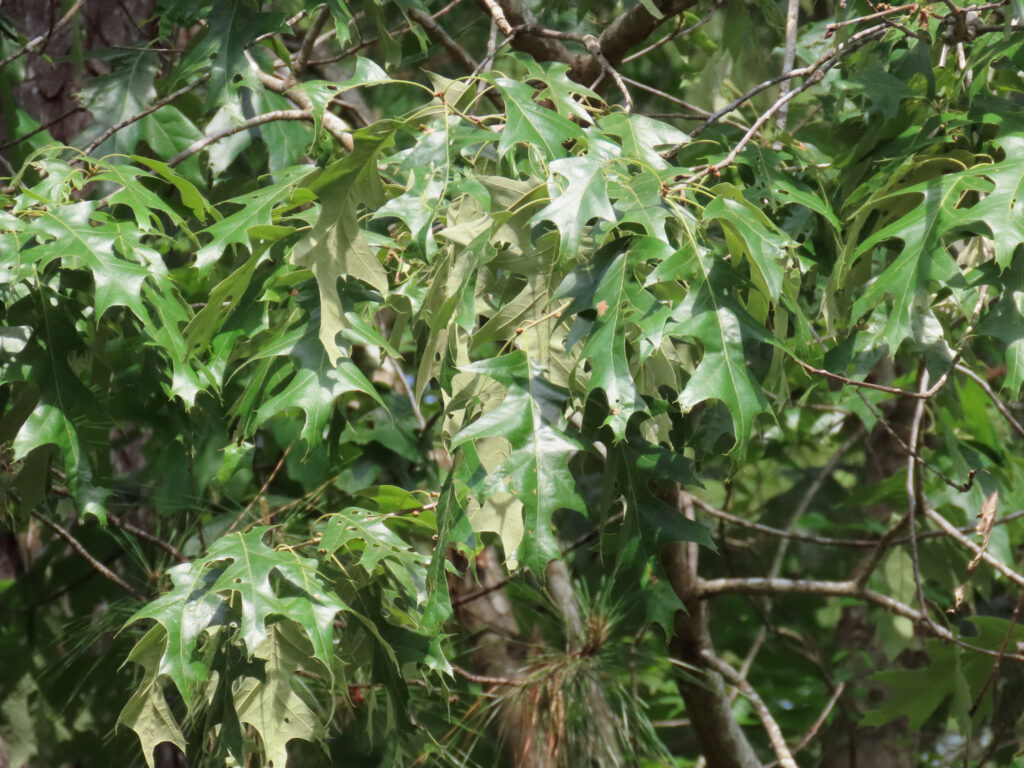
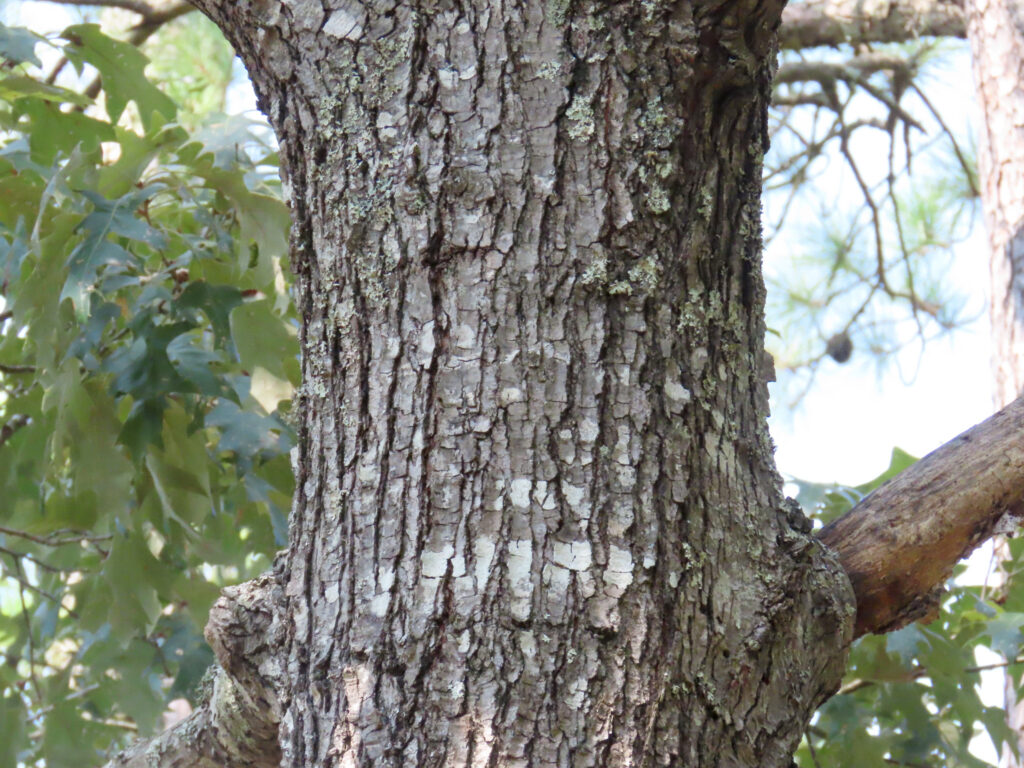
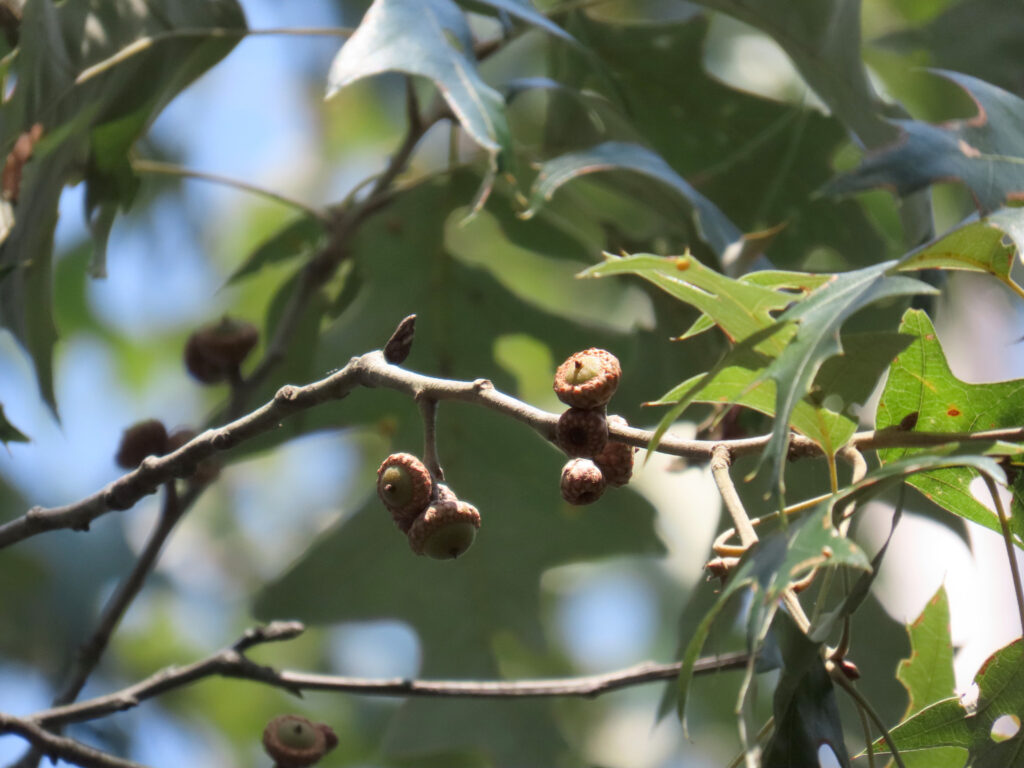
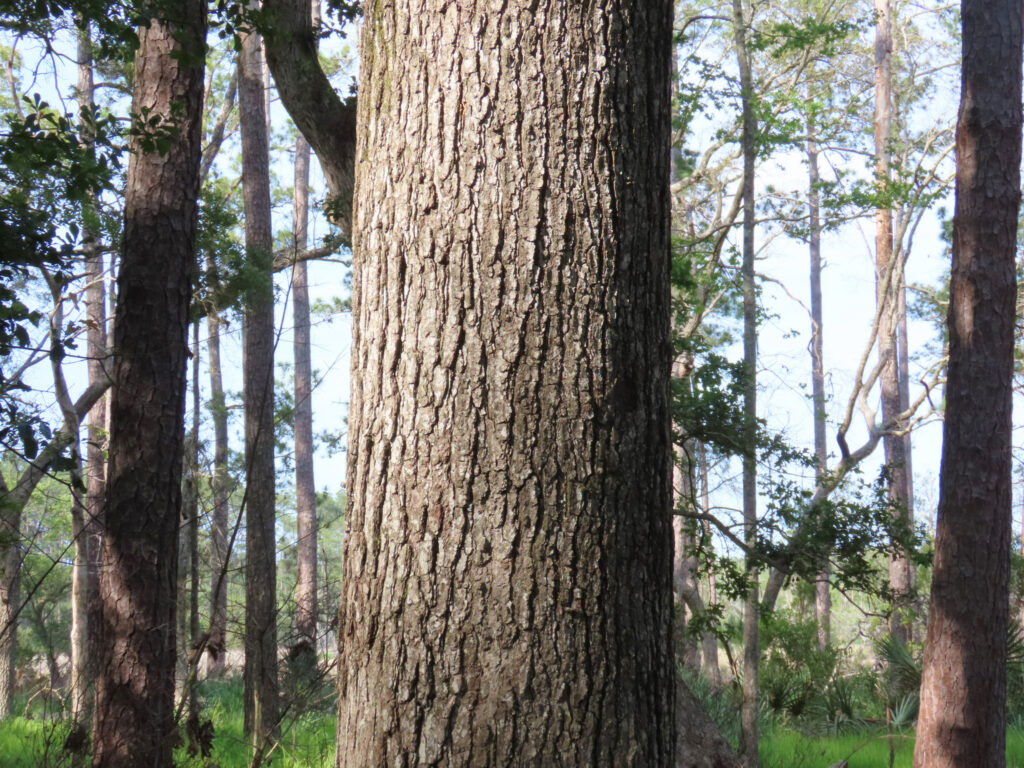
This week for Flora and Fauna Friday, it’s the pillar of our floodplain forest community, Cherrybark Oak (Quercus pagoda).
Cherrybark Oak is a native tree found throughout the coastal plain of the southeast, but strangely not in Florida. It grows predominantly in floodplain forests, preferring the sandier and drier soils found within a floodplain’s profile where the water table is high and soils rich, but only infrequent flooding. Cherrybark Oak is a member of the red oak group, meaning it has late maturing acorns, bristle tips to its leaves, and ruddy colored wood. Its leaves are a dark-green with a tan underside and deep lobes, taking on a shape somewhere in between Black Oak (Q. velutina) and Southern Red Oak (Q. falcata), leaning more towards the latter. In fact, Cherrybark Oak was for a long time considered just a subspecies of Southern Red Oak. That’s surprising to me, as the two are remarkably distinct when you look beyond the leaves. Cherrybark Oak’s most distinguishing feature is predictably its bark, which is silvery on the surface of its small rectangular scales of bark with the furrows running between them a blend dark gray and rusty orange. This bark pattern is similar to the unmistakable bark of our abundant Black Cherry (Prunus serotina), especially when young. The bark and trunk shape of Cherrybark Oak is quite distinct among South Carolina’s oaks. Cherrybark Oak’s trunk is generally straight as an arrow, with a buttress towards the base that widens and furrows with maturity. It grows rapidly to a height exceeding one-hundred feet and attaining a diameter of two to three feet in only a handful of decades. They can live for several hundred years and may reach a diameter of six feet within that time.
Their rapid growth rate, straight trunk, and high quality reddish wood make Cherrybark Oak an economically important hardwood timber species in the Southeast for use in furniture, flooring, and interior finish. It’s an especially valuable timber tree in bottomlands and floodplains where it can be grown quickly and sustainably in its natural habitat. These floodplain forests are the perfect nursery for trees, having ample water year round and periodic floods that deposit sediment to renourish the soils. Cherrybark Oaks are also wonderful trees for wildlife. Oaks collectively sustain the highest biodiversity of insect life of any genus in the Eastern United States. This makes them magnets for leaf gleaning birds and woodpeckers, and a great shade tree to sit under for any bird watcher looking to sneak a peak of transient warblers during migration. Its acorns are also an important winter food source for many species of birds and mammals, like White-tailed Deer, Wild Turkey, Blue Jays, woodpeckers, squirrels, mice, and Raccoons. Red oak acorns in gerenal, although tougher on the gut due to high tannin levels, are a more important food source for wildlife than white oaks most years. White oak acorns are larger and more palatable, but their size makes them difficult for some species to eat and they germinate soon after they hit the ground. Conversely, red oak acorns stay dormant for much longer, which keeps them edible through the harsh tail end of winter and allows them to be cached away by squirrels, jays, and woodpeckers for longer. They have a higher concentration of protein and fat as well, making them more nutritious by volume. This makes red oaks an irreplaceable staple in the winter diet of many wildlife species.